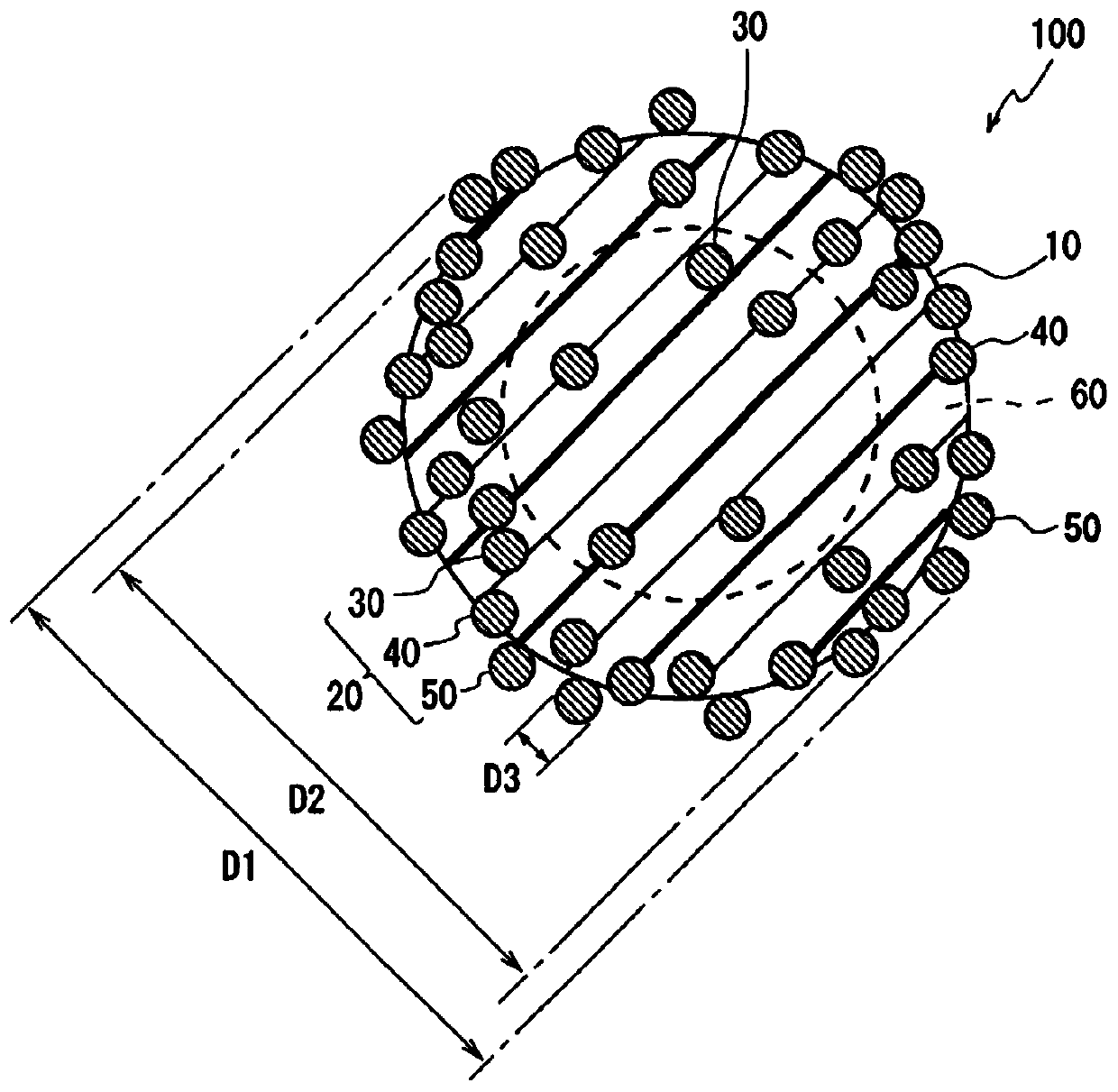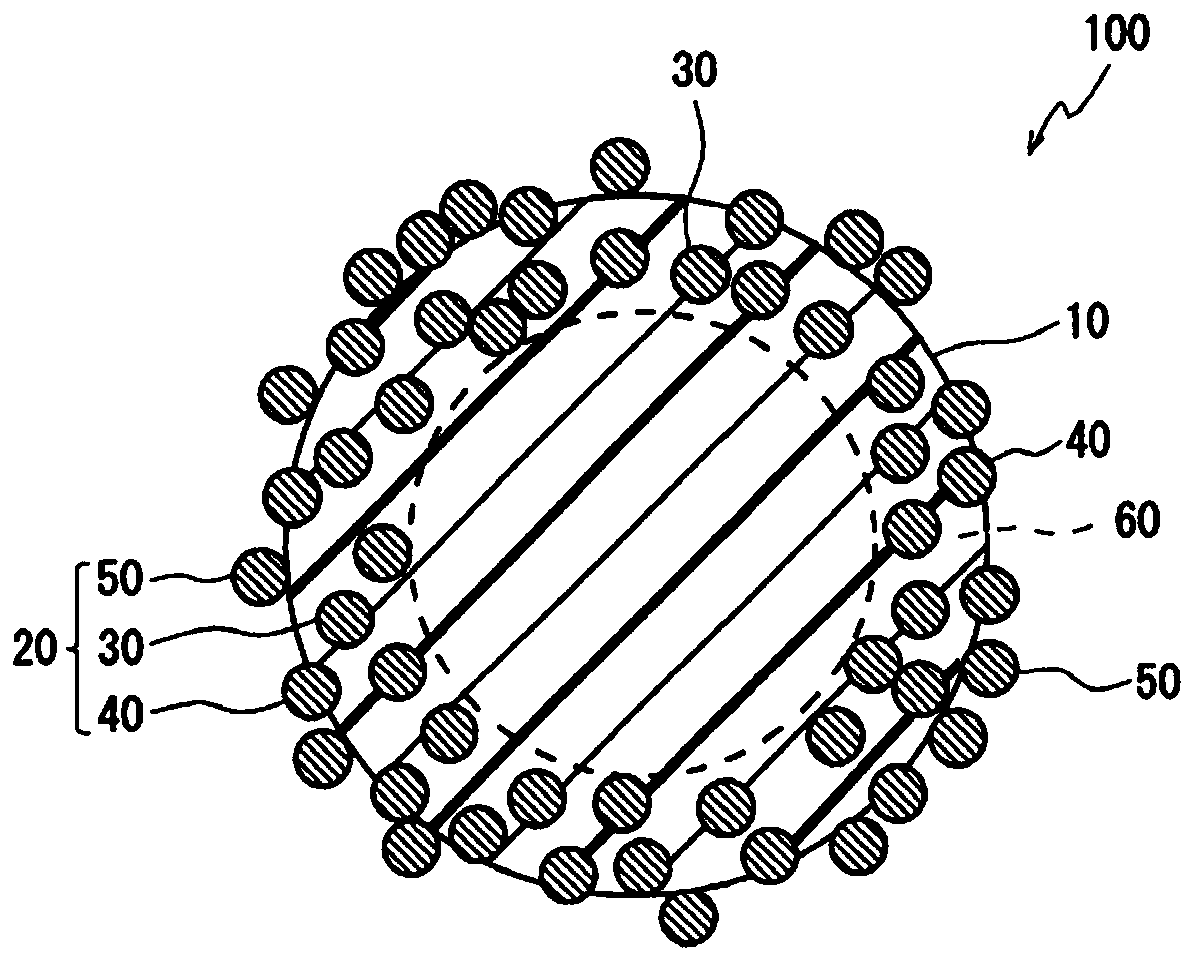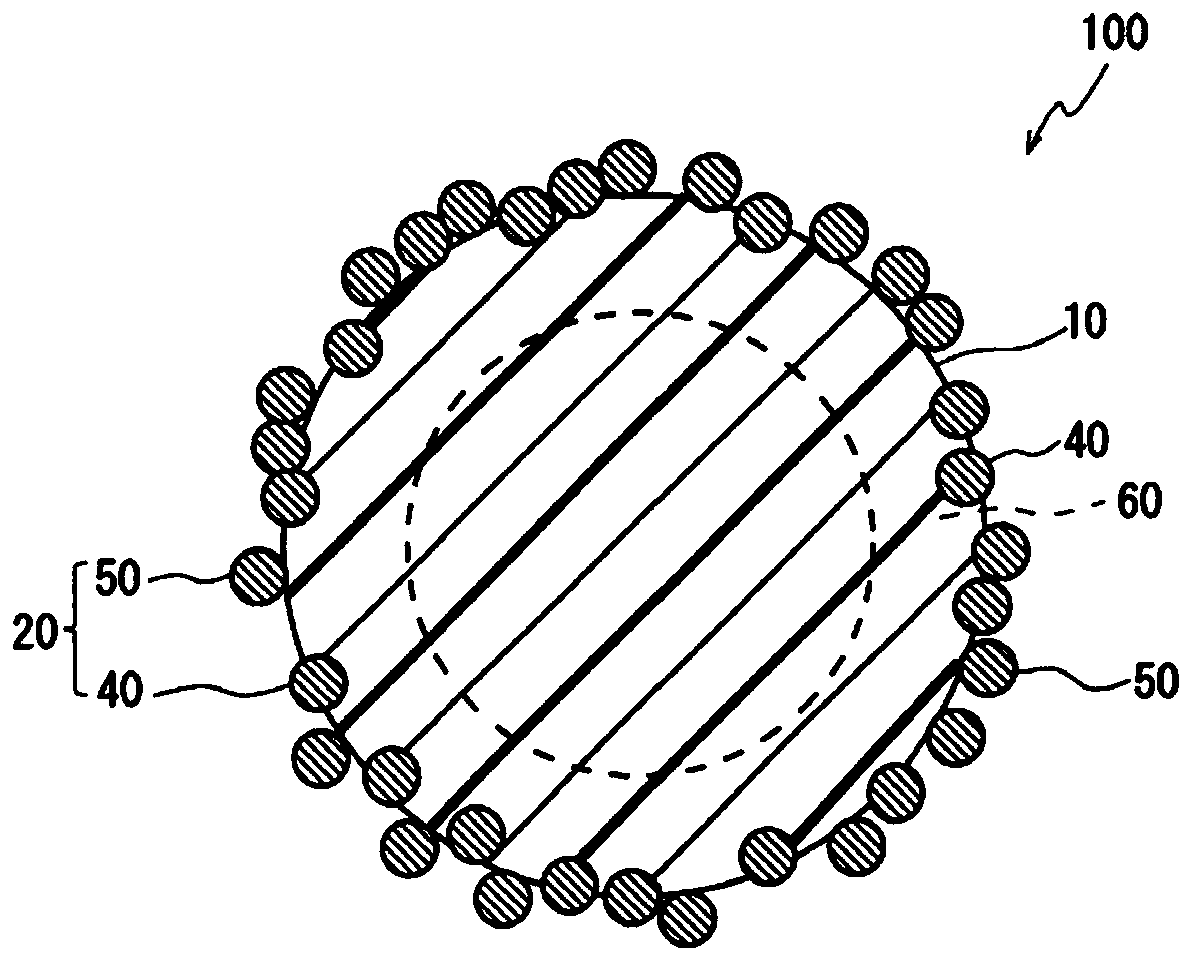Metal-resin complex and use thereof
A complex and resin technology, applied in the field of test strips for lateral flow chromatography, can solve the problems of difficult antigens or antibodies, unclear effects, insufficient visibility, etc., to achieve suppression of non-specific reactions, excellent detection sensitivity, and visual excellent recognition effect
- Summary
- Abstract
- Description
- Claims
- Application Information
AI Technical Summary
Problems solved by technology
Method used
Image
Examples
Embodiment 1
[0229]
[0230] After adding 54 g of pure water to B-1 (91.5 g), 400 mM chloroplatinic acid aqueous solution (100 g) was added, and it stirred at 30 degreeC for 3 hours. After the mixed solution was left to stand for 24 hours, A-1 was precipitated by centrifugation (3000 rpm, 30 minutes), and the supernatant was removed to remove excess chloroplatinic acid. Thereafter, the concentration was adjusted to obtain a 5% by weight platinum ion-adsorbing resin particle dispersion C-1.
[0231] Next, C-1 (20.6 g) was added to 1392 g of pure water, and while stirring at 3° C., 132 mM dimethylamine borane aqueous solution (40 g) was added dropwise over 20 minutes, and stirred at 3° C. for 1 hour And stirring at room temperature for 3 hours, the platinum-resin composite particle D-1 with an average particle diameter of 381 nm was obtained. D-1 was concentrated by centrifugation, purified by dialysis, and the concentration was adjusted to obtain 1 wt % platinum-resin composite particle ...
Embodiment 2
[0234]
[0235] Using B-2 instead of B-1, in the same manner as in Example 1, 5 wt% of platinum ion-adsorbing resin particle dispersion C-2, platinum-resin composite particles D-2, 1 wt% Platinum-resin composite particle dispersion E-2 and platinum-resin composite particle F-2.
[0236] The average particle diameter of D-2 is 461 nm, and the absorbance of F-2 is 1.77. In addition, the average particle diameter of the platinum particles in F-2 was 5.0 nm, and the supported amount of platinum was 37.6 wt%. Table 1 shows the results of the zeta potential measurement of F-2.
[0237] In the above resin-platinum composite F-2, the platinum particles include contained platinum particles completely contained in the resin particles, partially exposed platinum particles having a part embedded in the resin particle and a part exposed outside the resin particle, And the surface-adsorbed platinum particles adsorbed on the surface of the resin particles, at least a part of the platinum...
Embodiment 3
[0239]
[0240] Using B-3 instead of B-1, in the same manner as in Example 1, 5 wt% of platinum ion-adsorbing resin particle dispersion C-3, platinum-resin composite particles D-3, 1 wt% Platinum-resin composite particle dispersion E-3 and platinum-resin composite particle F-3.
[0241] The average particle diameter of D-3 is 454 nm, and the absorbance of F-3 is 1.45. In addition, the average particle diameter of the platinum particles in F-3 was 3.8 nm, and the supported amount of platinum was 37.7 wt%. Table 1 shows the results of the zeta potential measurement of F-3.
[0242] In the above resin-platinum composite F-3, the platinum particles include contained platinum particles completely contained in the resin particles, partially exposed platinum particles having a part embedded in the resin particle and a part exposed outside the resin particle, And the surface-adsorbed platinum particles adsorbed on the surface of the resin particles, at least a part of the platinum...
PUM
| Property | Measurement | Unit |
|---|---|---|
| particle size | aaaaa | aaaaa |
| particle size | aaaaa | aaaaa |
| zeta potential | aaaaa | aaaaa |
Abstract
Description
Claims
Application Information
 Login to View More
Login to View More - R&D
- Intellectual Property
- Life Sciences
- Materials
- Tech Scout
- Unparalleled Data Quality
- Higher Quality Content
- 60% Fewer Hallucinations
Browse by: Latest US Patents, China's latest patents, Technical Efficacy Thesaurus, Application Domain, Technology Topic, Popular Technical Reports.
© 2025 PatSnap. All rights reserved.Legal|Privacy policy|Modern Slavery Act Transparency Statement|Sitemap|About US| Contact US: help@patsnap.com



